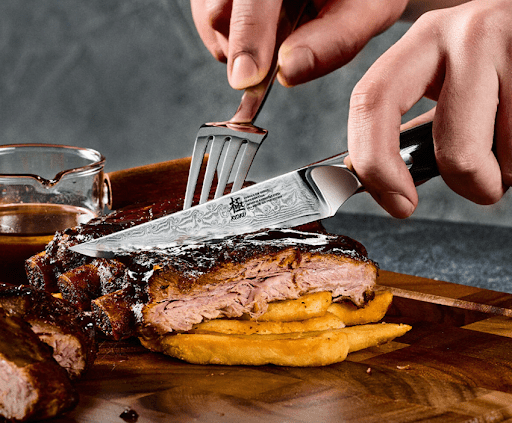The holiday season is a time of joy, celebration, and, let’s be honest, a lot of cooking. From carving the golden-brown turkey to chopping heaps of vegetables for festive sides, precision in the kitchen can make a huge difference. That’s where Japanese knives come in. Renowned for their craftsmanship, sharpness, and elegance, these knives elevate both the process and the presentation of holiday meals.
The Art and Craft of Japanese Knives
Japanese knives aren’t just tools—they’re works of art. With centuries of tradition behind them, they are crafted to balance strength, sharpness, and beauty. Each knife is designed to glide smoothly through ingredients, offering control and consistency. For holiday cooking, this means you can chop, slice, and carve with confidence, achieving professional-looking results without the stress.
Key Japanese Knife Types for Holiday Cooking
Different knives excel at different tasks. Here are some of the most useful for your holiday kitchen:
- Gyuto (Chef’s Knife): A versatile all-rounder, perfect for meats, vegetables, and herbs.
- Santoku: Ideal for slicing, dicing, and mincing—great for prepping large quantities of ingredients.
- Nakiri: Specifically designed for vegetables, making even the most delicate cuts effortless.
- Deba or Sujihiki: Essential for carving poultry, slicing ham, or filleting fish.
- Japanese Steak Knives: Ideal for holiday meals featuring steak, roasts, or prime rib. Their razor-sharp, narrow blades glide cleanly through seared crusts and tender interiors without tearing the meat.
Having the right knife for each task makes prep faster, safer, and more enjoyable.
Benefits of Using Japanese Knives in Holiday Prep
Using Japanese knives brings several advantages to holiday cooking:
- Precision: Every cut is clean and uniform, ensuring even cooking and beautiful presentation.
- Efficiency: Sharp blades reduce prep time, especially when handling large holiday meals.
- Grace: The smooth handling makes cooking feel almost meditative, even during hectic holiday days.
- Safety: A sharp knife is safer than a dull one—less force is needed, which means fewer accidents.
Practical Tips for Holiday Cooking with Japanese Knives
To make the most of your knives this holiday season:
- Choose the right knife: Match your knife to the task—gyuto for general prep, nakiri for veggies, debas for meat.
- Prep on safe surfaces: Use a non toxic cutting board made from wood or high-quality, food-safe materials. It not only protects your Japanese knives’ edges but also keeps your holiday meals safer and cleaner.
- Keep them sharp: Regular honing and proper sharpening ensure consistent performance.
- Use proper techniques: Learn slicing, rocking, and carving motions for smoother, safer cuts.
- Clean and store carefully: Hand wash and dry immediately to maintain the knife’s edge and prevent rust.
Showcasing Japanese Knives in Holiday Dishes
The precision of Japanese knives doesn’t just improve prep—it enhances presentation. Imagine perfectly sliced turkey, even carrot batons for a vegetable platter, or delicate garnishes that impress guests. With Japanese knives, your holiday dishes aren’t just delicious—they’re beautiful.
Conclusion
Holiday cooking is a busy, joyful season, and the right tools make a world of difference. Japanese knives bring precision, efficiency, and elegance to your kitchen, helping every dish look and taste its best. Investing in a quality knife can turn the stress of holiday prep into a more enjoyable, graceful, and rewarding experience—one slice at a time.





























